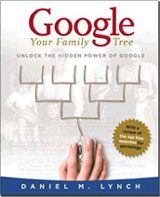|
|
|
|

Census Basics
  If you're already familiar with the basics of using census data to conduct family history research, you may wish to view another one of our free site resources (browse our menu at left or visit our site map). This section of our site is designed to provide an overview of how and why census information is so valuable to genealogists and historians and why all genealogists should take the time to develop a general familiarity with using this resource on a regular basis.
If you're already familiar with the basics of using census data to conduct family history research, you may wish to view another one of our free site resources (browse our menu at left or visit our site map). This section of our site is designed to provide an overview of how and why census information is so valuable to genealogists and historians and why all genealogists should take the time to develop a general familiarity with using this resource on a regular basis.
Benefits to Using Census Data
There are numerous benefits to using census data while conducing family history research, regardless if the census was conducted by a local, state, or federal authority. In fact, if you're lucky enough to be researching an ancestor from a geographic area that was included in more than one periodic census, you may feel as though you've hit the genealogical jackpot!
Following are among the key benefits of researching the Census:
• Establishes a date and place for a particular person and/or family group
• May show or prove relationship between one or more individuals
• May include information to establish age and/or place of birth
• Generally provides a more detailed picture of a family group (especially siblings)
• Looking at the list of neighbors can yield unexpected finds
• Can often obtain clues pertaining to immigration and/or naturalization status
• May provide data for occupation, military service or other category

What's Included in this Census Basics Section?
 Census 101 is a primer for getting started, including detailed examples Census 101 is a primer for getting started, including detailed examples
 Census Overview is a discussion of why census are conducted Census Overview is a discussion of why census are conducted
 Census History is more of a historical perspective of the U.S. Census Census History is more of a historical perspective of the U.S. Census
 Detailed breakdown of Census Records for genealogy Detailed breakdown of Census Records for genealogy
 Description of individual census data elements Description of individual census data elements
 An explanation of the Soundex Indexing System (for Surnames) An explanation of the Soundex Indexing System (for Surnames)
 An explanation of GEDCOM files An explanation of GEDCOM files
 A fun way to look through history and test your research skills is our Celebrity Census A fun way to look through history and test your research skills is our Celebrity Census

Tips for a Successful Search (Online or Offline)
Once you have indentifed a person you are trying to locate in the census, you should have as much information as you already know to help ensure an easy search. This is especially true for common names! If you're searching for a 'John Murphy' in the 1900 U.S. Census for New York City, you'd better know his occupation and approximate age if you want to narrow down the possible matches to your search.
Consider the following steps:
1. Determine which census years apply given birth/death dates for the person you're researching
2. Start with the most recent census available to you (eg: 1930 is better than 1920 or 1910)
3. Where possible, obtain detailed geographic information (eg: City, County, and State)
4. Consider possible variant spellings or misspellings (see soundex overview)
5. Determine approximate age and others who may be living in the same household
If you have comments or questions about the content of the Census Basics page,
please contact us at your convenience.
|
|




